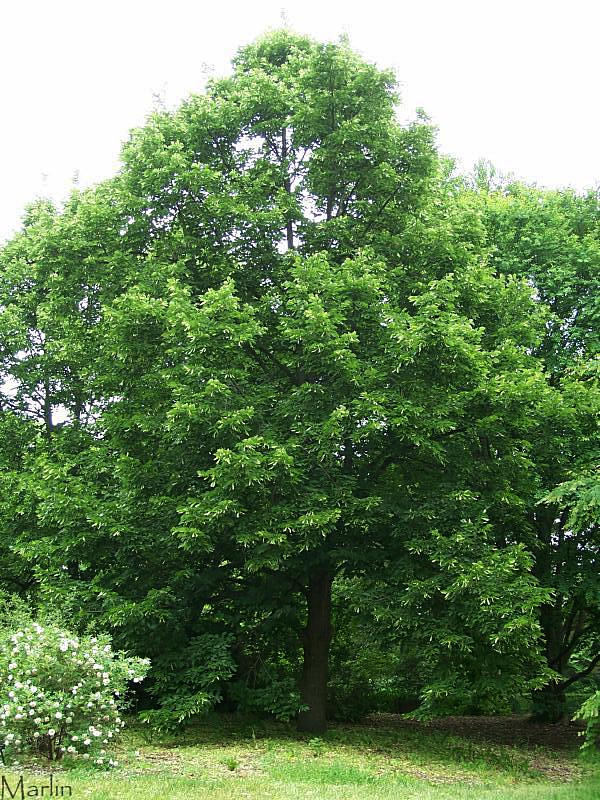Redmond Linden – Tilia x euchlora

‘Redmond’ Linden grows 65 to 75 feet tall and 30 to 45 feet wide. It is quite drought-tolerant. The tree is pyramidal when young but develops into a striking specimen with an upright, oval canopy atop a tall, straight trunk. The lower branches on the species remain on the tree and gently drape toward the round before sweeping up in a gentle curve. This cultivar has a more upright habit so branches will not droop as much as the species. The four to eight-inch-long, heart-shaped leaves are dark green throughout the year fading only to pale green or yellow before dropping in autumn.
In June, the trees produce abundant, two to three-inch wide clusters of very fragrant, light yellow blooms which are extremely attractive to bees, who make a delicious, fragrant honey from their harvests. The small, grey nut which is later produced will persist on the tree until midwinter. The trunk on the species can grow to six feet or more across on mature specimens.
The fragrant flowers of the linden tree hang from the middle of leafy, ribbon-like green bracts in long-stalked clusters. The flowers are tiny, with 5 yellowish-white petals. During the last weeks of June and first weeks of July they exude a powerful, haunting scent that can be detected up to a mile away.
The flowers possess a nectar which attracts bees and produces a strong flavored honey. When this tree is in flower it will be full of bees, hence its common name “Bee Tree”. During the three weeks that the Lindens bloom, bees forsake most other flowers. The honey that they make of Linden nectar is white in color, and highly regarded. The flowers when gathered and dried can be used to make tea. Linden flowers are used in the manufacture of perfumes.
Linden wood is soft and creamy, and it is much favored by woodcarvers because of its workability (it is said to “cut like cheese”) and its even grain. In past centuries it was used to make ship’s figureheads and cigar-store Indians. Today it is used for broom handles, beehive frames, piano sounding boards and certain parts of guitars. — USDA NRCS Plant Fact Sheet
Family Tiliaceae – Basswoods, Lindens
50 genera and 400 species; widespread in tropical and subtropical regions, with relatively few species in temperate regions. Especially abundant in Southeast Asia and Brazil. The leaves of all the Tilias are heart-shaped and most are asymmetrical, and the tiny fruit, looking like peas, always hang attached to a ribbon-like, greenish bract.

